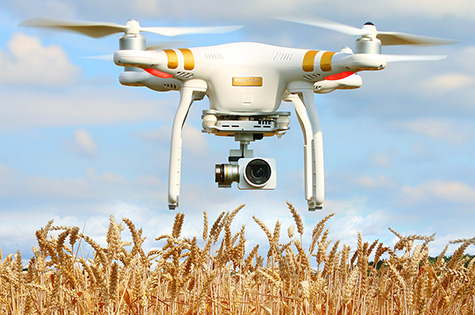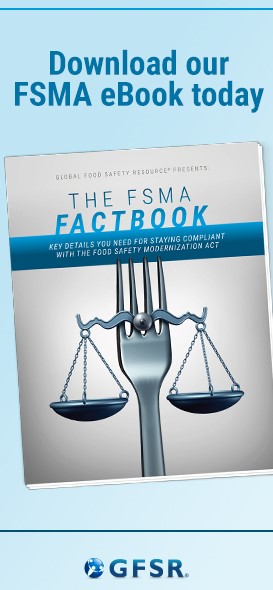Improving Food Safety on Farms with Big Data
By Steven Burton
Farmers have always relied on data to predict weather and other factors that can affect crop health and yield. With the rise of Big Data and Internet of Things (IoT) devices, new systems are becoming available to allow farmers to collect more information on larger scales than was ever possible before.
Big Data is about pooling much larger quantities of data than any operation can do on its own. With more information (especially data collected through IoT devices), industry and government alike can see how production yields compare over time, regionally, nationally, and even globally. This information helps food producers determine whether their current practices – and any new initiatives – are working to improve crop yield, quality, and safety.

Smart Farming Improves Crop and Animal Health
One of the most dramatic applications of Big Data on farms relates to the health of crops and livestock by allowing farmers to catch problems early. A 2017 study published in Agricultural Systems identified the core benefits of what is being called smart farming: sensing and monitoring to measure performance, analysis and decision making, and intervention. When it comes to crops, drones with cameras that can see across different spectrums (including infrared) collect data that can be used to calculate the vegetation index, analyze heat signatures, and identify levels of green light and NIR light, all of which helps farmers identify plant stress that may indicate nutritional problems or pests far faster than possible with older methods of detection.
Drones are also used to collect data on soil composition; that data can then be analyzed to manage irrigation and nitrogen levels with greater precision. With better data, aerial crop spraying is optimized to be faster, more efficient, and spray more evenly, which reduces the risk of groundwater contamination. Similar benefits extend to livestock as well. Precision dairy farming, for example, uses RFID (radio frequency identification) tags to detect when cows require vaccination or are infected by mastitis or worms. Use of such technologies can also reduce the use of antibiotics among livestock without increasing the risk of disease (which is more and more important to the industry).
Applying Big Data to Food Safety Software
One example of this is a feature called Smart Hazard Suggestions, which pools anonymized data to expedite and improve food safety plans. Big Data can have direct implications for crop and animal quality and health, but it can also enhance food safety planning in other ways. Using data from many facilities, food safety software can use predictive modelling to introduce new features to the creation and management of a food safety plan.
One example of this is a feature, which pools anonymized data to expedite and improve food safety plans. When a facility is created in the system (e.g. a soybean farm), specific process steps are suggested to the user that can then be used to model production processes. When the user must identify hazards associated with those production steps (as required in a HACCP plan), a list of suggestions for biological, chemical, physical, and radiological (for HARPC compliance) hazards will be suggested, avoiding the need for users to sort through hundreds of hazards to find those that are relevant. This also helps to educate workers on the hazards that need to be controlled. Of course, all suggestions must be confirmed by a food safety professional.
On the other side of things, this hazard database becomes an essential resource for inspectors, as large pools of data collected through the use of such software programs can then be used by regulatory agencies to undertake document review and identify a profile of establishments where problems are more likely to occur.
****
When data is pooled, everybody wins: higher crop yields, better product quality, and improved bottom lines. Using Big Data on farms, in other food establishments, and in regulatory operations benefits society as a whole by delivering better, safer food.
About the Author
Steven Burton is an innovative software architect and the creator of the award-winning food production management system, Icicle. Through the development of advanced food safety technology based on over a decade of sophisticated software development expertise, Burton has taken Icicle beyond document management and food safety to offer a complete solution for smart automation, improving quality standards, production efficiency, and expanding growth opportunities for all types of food businesses.

Categories: Risk Management, Trends in the Industry
Tags: big data in food safety , big data on farms , Food Safety , food safety software



